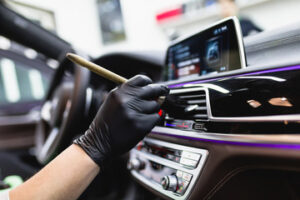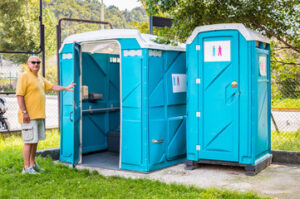Plastic injection molding allows for the production of a wide variety of plastics. This includes FDA-approved materials, as well as biodegradable and sustainable plastics.

Choosing the right plastic injection manufacturer for your project is essential to its success. A quality partner diversifies your supply chain, enhances quality control, and reduces costs. Read on Plastic Injection Mold Companies Florida for more information.
One of the most critical factors for successful plastic injection molding is managing production costs. These costs can be influenced by several elements, including design complexity, material selection, labor, and tooling. To reduce costs, a plastic injection mold company should use an efficient production plan and simple designs for their products. This will minimize the number of rework expenses and ensure that the parts are produced at the best quality possible.
The type of mold used also impacts production costs. Aluminum molds are more cost-effective for short production runs, while steel molds are better suited for high-volume production. In addition, the size of the mold also affects production costs. Larger molds are more expensive than smaller ones because they require more time and energy to manufacture. Injection molding companies must consider these factors when determining the price of their services.
Besides these cost factors, the company’s location and equipment may influence production costs. Some companies may have old, slow machinery while others invest in newer technology for faster and cleaner manufacturing processes. When choosing a supplier, it’s important to find out their daily production capacity and volume capabilities. This will help you avoid costly mistakes and delays.
It is important to choose a reliable injection molding company that will provide you with the best services and products for your needs. A good company should have a wide range of services, from evaluating your product design to helping you select the right plastic materials for your project. Additionally, it should offer advanced target cost planning for your production runs. It is also essential to select a manufacturer that has a good reputation in the industry and offers fair prices.
High-performance
Choosing the right plastic injection molding company for your product can make a difference in your final product’s quality and cost. Some manufacturers specialize in a specific plastic type, while others offer a wide range of services. Some of them offer one-stop molding solutions, including engineering design, product development, and mold manufacturing. Others also provide a full range of post-production services, such as assembly and finishing.
Some of the most common plastics for injection molding are nylon, acrylonitrile butadiene styrene, and ABS. These plastics are versatile and offer a variety of properties, including chemical, UV, and electrical resistance. Additionally, they are easy to process, and can be used for a wide range of applications.
Plastic injection molding is an excellent choice for producing large parts that require a high level of precision and durability. This process requires a precise mix of raw material and a high-pressure injection system. The resulting plastic component has a precise surface finish and reliable dimensional tolerances. It is often the cheapest and fastest way to produce a large number of finished plastic components.
When selecting a plastic injection molding company, be sure to consider their daily production capacity and volume capabilities. This will help you avoid the frustration of having to wait for a completed project. Some companies can only produce a small quantity of parts, while others are capable of delivering millions of products.
Stratus Plastics is a custom injection molding company that offers a wide range of services for high-quality plastic products. The company has proprietary molds, unique metal materials, and advanced equipment. Its manufacturing space includes over 40,000 square feet and is equipped with more than 12 advanced injection molding machines.
Lightweight
Plastic injection molding companies are a vital part of the manufacturing industry. They produce a wide range of custom plastic products, including automotive parts, sports equipment, and medical devices. They also provide services such as design, prototyping, and engineering. In addition, they offer a variety of mold types and materials to meet customer requirements. Many of these companies are also eco-friendly and use energy-efficient tooling procedures.
When choosing a plastic injection mold company, it is important to consider their daily production capacity and volume capabilities. This will help you avoid delays in production or costly errors. For example, if you need a large number of parts for your product, it is best to choose a company that can produce them quickly.
According to a recent report, the global plastic injection mold industry is growing rapidly. Its market size is expected to increase by 28% over the next five years, primarily due to increased demand for lightweight products. This is due to the fact that lighter weight products can reduce shipping costs and save fuel.
Injection molding companies use various types of polymers to produce high-quality products. These polymers include thermoplastics and thermosets. Thermoplastics are versatile polymers that soften with moderate heat and can be reheated to reshape them. They are a popular choice for injection molding companies because of their low cost and durability.
Injection molding manufacturers can provide a variety of services, from 3D CAD modeling to prototyping and finishing. They can also use advanced CNC technology to make parts and molds. These companies are known for their attention to detail and customer-focused approach. They can even provide services such as 3D printing and prototyping to ensure that designs are accurate before production.
Durable
The use of plastic injection molding allows manufacturers to create parts that would be difficult to make by hand. These parts are formed by placing melted plastic into a mold, which is then allowed to cool and harden before being removed. The process can be used to create complex shapes and intricate designs. This makes it ideal for creating durable, high-quality products.
One of the top plastic injection mold companies is Providence Plastics, which offers specialized solutions that suit industrial requirements. Its manufacturing capabilities include injection molding, tool designing, and production. In addition, the company provides services like hot stamping, ultrasonic welding, pad printing, assembly, and distribution.
Another top plastic injection mold company is Rosti, which offers a complete range of services from design to manufacturing. It has extensive experience with a wide variety of industries, including automotive and packaging. Its engineering expertise and quality products are key factors in its reputation as a leading manufacturer.
Injection molding is a cost-effective technique that can be used to produce a variety of products. It uses a pressurized cylinder to inject melted plastic into a cavity, which is then allowed to cool and harden. The result is a solid, durable product that can withstand harsh environments. Injection molding can also be used to create custom parts for a variety of applications.
There are a number of different types of plastic injection mold manufacturers, but choosing the right one for your needs is crucial. The size of the company is a big factor, as bigger manufacturers often have better equipment and are more competent than smaller ones. Additionally, larger manufacturers can provide faster turnaround times and higher-quality products.
Customized
Plastic injection mold companies can provide customers with customized services to meet their unique needs. They can help with product design and development, prototyping, and even the production of finished parts. They can also handle a variety of materials, including high-performance polymers like ULTEM and PEEK.
They can also handle complex, high-volume projects with ease. Their diversified machine tonnage, experience with a wide range of resins, and expertise in EOAT (electronics manufacturing service) make them well-suited to produce complex parts. They can offer shorter lead times and optimize production by leveraging their extensive engineering support and innovative problem-solving approach.
With over 65 years of experience, Accurate Molded Products is a highly-regarded manufacturer of custom rubber molding and plastic injection molding for various industries. The company has facilities in Southeast Asia and Chicago, and is ISO and TS certified to ensure the highest quality of process and product. They also focus on building strong connections with employees, clients, and the community.
In addition to its exemplary production capabilities, Naber Plastics is committed to sustainability. It uses recycled materials in its manufacturing processes and has efficient production equipment that saves 47% of electricity. Its dedicated customer service team is available around the clock to answer any questions or concerns. The company specializes in one-stop solutions for product design, tool/mold manufacturing, and production, ensuring strict compliance with quality requirements and delivering high-quality products on time.

